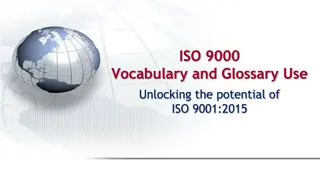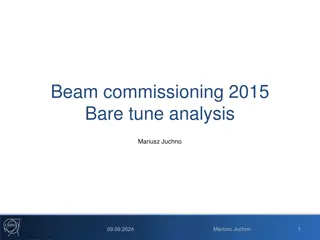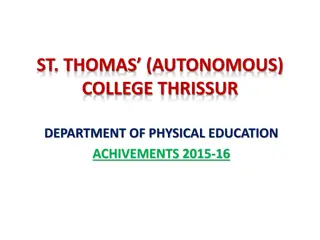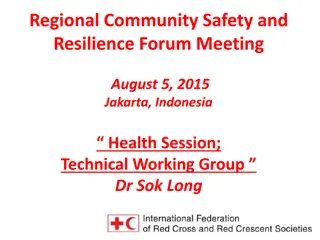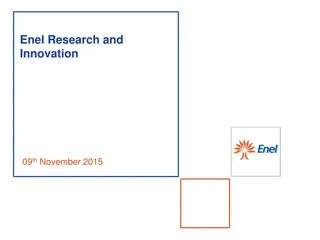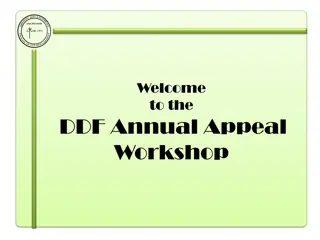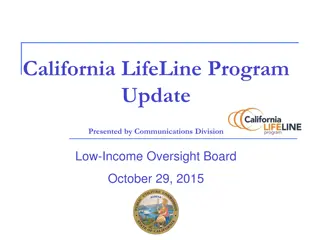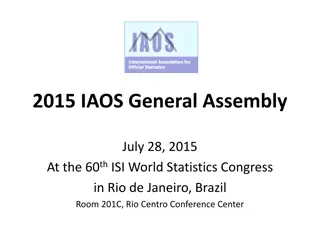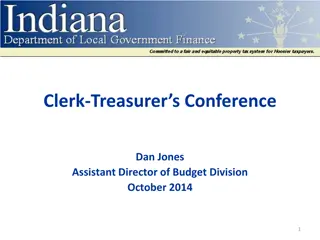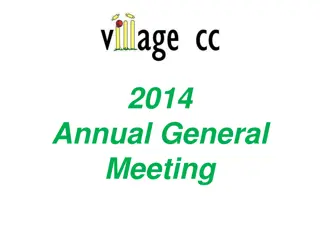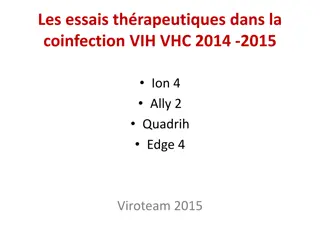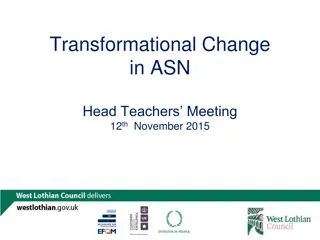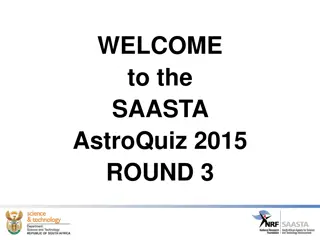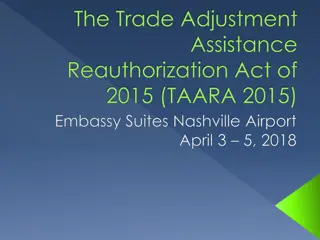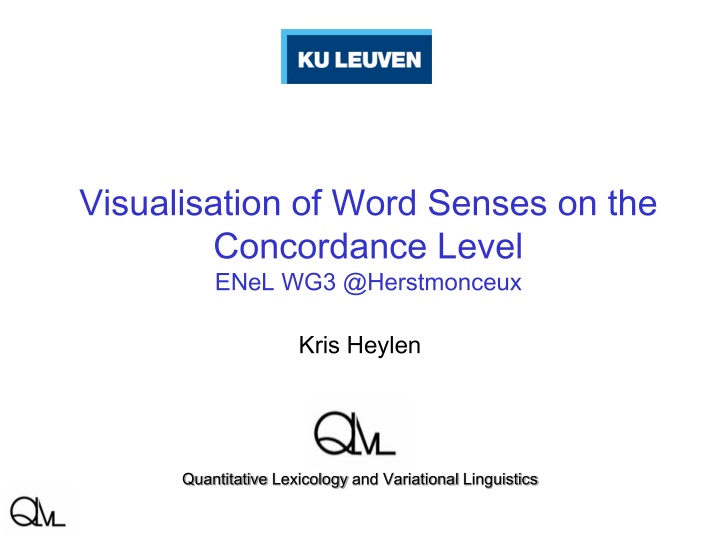
Visualising Word Senses on Concordance Level: ENeL WG3 at Herstmonceux
Dive into the visualisation of word senses on the Concordance level in the context of ENeL WG3 at Herstmonceux by Kris Heylen. Explore the comparison between collocates and concordances, understanding usage patterns, and similarities in concordances of different words.
Download Presentation

Please find below an Image/Link to download the presentation.
The content on the website is provided AS IS for your information and personal use only. It may not be sold, licensed, or shared on other websites without obtaining consent from the author. If you encounter any issues during the download, it is possible that the publisher has removed the file from their server.
You are allowed to download the files provided on this website for personal or commercial use, subject to the condition that they are used lawfully. All files are the property of their respective owners.
The content on the website is provided AS IS for your information and personal use only. It may not be sold, licensed, or shared on other websites without obtaining consent from the author.
E N D
Presentation Transcript
Visualisation of Word Senses on the Concordance Level ENeL WG3 @Herstmonceux Kris Heylen Quantitative Lexicology and Variational Linguistics
VISUALISING SENSES: COLLOCATESVS CONCORDANCES Visualisation of senses through usage patterns on two levels: 1. Collocations (in wordsketches): Similar collocates are grouped together and showed as close together or connected Hask Collosaurus SketchEngine ENeL WG3 Herstmonceux 13-07-2015
VISUALISING SENSES: COLLOCATESVS CONCORDANCES Visualisation of senses through usage patterns on two levels: 1. Collocations (in wordsketches): Similar collocates are grouped together and showed as close together or connected Hask Collosaurus, Sketchengine, 2. Concordances (occurrences, citations) Group concordances together that illustrate the same meaning and plot those as close together in a graph Interactive scatter plots with concordances as dots => complementary perspectives ENeL WG3 Herstmonceux 13-07-2015
Similarity of Concordances Concordances of bank: 1. Local banks 2. Follow the north bank 3. Private sector banks 4. Oak forests ran along the river banks banks offer loans at better rates bank up stream. banks had much lower debts. banks . Obviously (1,3) and (2,4) should be grouped together, but they do not share direct collocates However, the salient collocates of the collocates do show overlap!
Similarity of Concordances Concordances of bank: 1. Local banks 2. Follow the north bank 3. Private sector banks 4. Oak forests ran along the river banks banks offer loans at better rates bank up stream. banks had much lower debts. banks . Overlap in signif. collocates of observed collocates: 1 & 2 1 & 2 1 & 3 1 & 3 2 & 3 2 & 3 2 2 & 4 & 4 3 3 & 4 & 4 ENeL WG3 Herstmonceux 13-07-2015
Concordance plot of chip URL: https://perswww.kuleuven.be/~u0038536/VSVIS/ ENeL WG3 Herstmonceux 13-07-2015
Concordances of monitor synonyms beeldscherm beeldscherm and computerscherm monitor together with near computerscherm URL: https://perswww.kuleuven.be/~u0038536/googleVis/wSOCC/beeldscherm.html ENeL WG3 Herstmonceux 13-07-2015
Concordances of inbreuk (infringement) together with near-synonym overtreding https://perswww.kuleuven.be/~u0038536/googleVis/wSOCC/inbreukOvertreding.html ENeL WG3 Herstmonceux 13-07-2015
CONCLUSIONS Visualising proximity of concordances as complementary to visualising proximity of collocates: Helicopter view of a word s meaning potential Direct link to concordances Contrasting near-synonyms But: - collocates still are necessary to interpret concordance groupings (switch between two views?) - Only a sample of all concordances can be displayed at the time (integration with GDEX?) crossling (FIN), February/March 2013
For more information: http://wwwling.arts.kuleuven.be/qlvl/ kris.heylen@kuleuven.be Heylen, K., Wielfaert, T., Speelman, D., & Geeraerts, D. (2015). Monitoring Polysemy. Word Space Models as a Tool for Large- Scale Lexical Semantic Analysis. Lingua, 157, 153 172. doi:10.1016/j.lingua.2014.12.001

